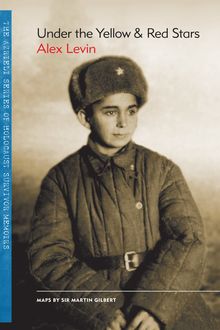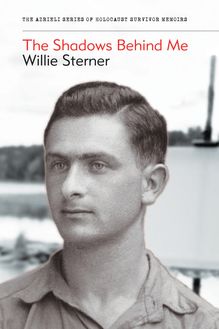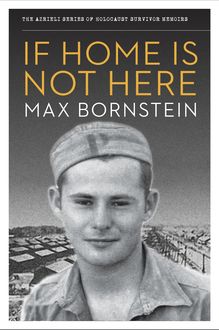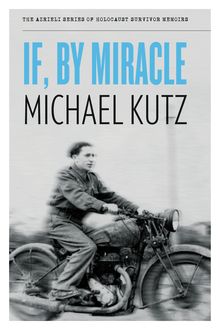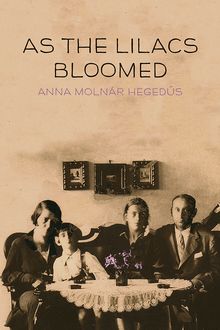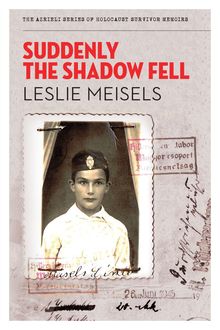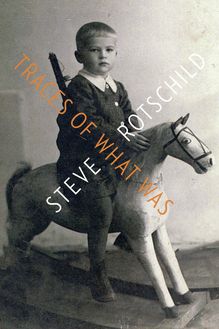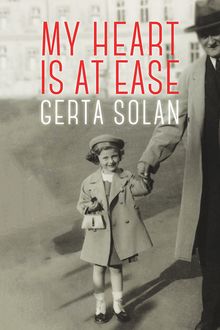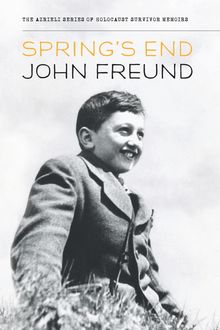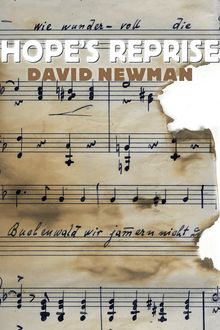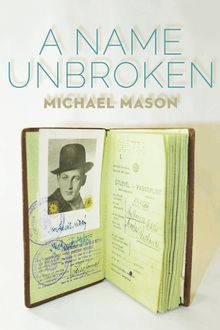-
 Univers
Univers
-
 Ebooks
Ebooks
-
 Livres audio
Livres audio
-
 Presse
Presse
-
 Podcasts
Podcasts
-
 BD
BD
-
 Documents
Documents
-
- Cours
- Révisions
- Ressources pédagogiques
- Sciences de l’éducation
- Manuels scolaires
- Langues
- Travaux de classe
- Annales de BEP
- Etudes supérieures
- Maternelle et primaire
- Fiches de lecture
- Orientation scolaire
- Méthodologie
- Corrigés de devoir
- Annales d’examens et concours
- Annales du bac
- Annales du brevet
- Rapports de stage
La lecture à portée de main
Vous pourrez modifier la taille du texte de cet ouvrage
Découvre YouScribe en t'inscrivant gratuitement
Je m'inscrisDécouvre YouScribe en t'inscrivant gratuitement
Je m'inscrisEn savoir plus
Vous pourrez modifier la taille du texte de cet ouvrage
En savoir plus

Description
Sujets
Informations
| Publié par | Azrieli Foundation |
| Date de parution | 01 septembre 2015 |
| Nombre de lectures | 0 |
| EAN13 | 9781897470947 |
| Langue | English |
| Poids de l'ouvrage | 1 Mo |
Informations légales : prix de location à la page 0,0300€. Cette information est donnée uniquement à titre indicatif conformément à la législation en vigueur.
Extrait
Hope’s Reprise
David Newman
TRANSLATED FROM YIDDISH BY MIRIAM BECKERMAN
The Azrieli Series of Holocaust Survivor Memoirs
Naomi Azrieli, Publisher
Jody Spiegel, Program Director
Arielle Berger, Managing Editor
Elizabeth Lasserre, Senior Editor, French-Language Editions
Farla Klaiman, Editor
Elin Beaumont, Senior Educational Outreach and Events Coordinator
Catherine Person, Educational Outreach and Events Coordinator, Quebec and French Canada
Marc-Olivier Cloutier, Educational Outreach and Events Assistant, Quebec and French Canada
Tim MacKay, Digital Platform Manager
Elizabeth Banks, Digital Asset and Archive Curator
Susan Roitman, Office Manager (Toronto)
Mary Mellas, Executive Assistant and Human Resources (Montreal)
Mark Goldstein, Art Director
François Blanc, Cartographer
Bruno Paradis, Layout, French-language editions
Contents
The Azrieli Series of Holocaust Survivor Memoirs
Series Preface: In their own words...
About the Glossary
Introduction
Acknowledgements
Map
Dedication
My Hometown
The Sky Ablaze
The Storm Approaches
Fighting the Fear
Would That I Had Never Known This Place
Hanka
Buchenwald
A Spark of Hope
Returning
A New Beginning
Epilogue
Glossary
Photographs
Copyright
About the Azrieli Foundation
Also Available
Series Preface: In their own words...
In telling these stories, the writers have liberated themselves. For so many years we did not speak about it, even when we became free people living in a free society. Now, when at last we are writing about what happened to us in this dark period of history, knowing that our stories will be read and live on, it is possible for us to feel truly free. These unique historical documents put a face on what was lost, and allow readers to grasp the enormity of what happened to six million Jews – one story at a time.
David J. Azrieli, C.M., C.Q., M.Arch
Holocaust survivor and founder, The Azrieli Foundation
Since the end of World War II , over 30,000 Jewish Holocaust survivors have immigrated to Canada. Who they are, where they came from, what they experienced and how they built new lives for themselves and their families are important parts of our Canadian heritage. The Azrieli Foundation’s Holocaust Survivor Memoirs Program was established to preserve and share the memoirs written by those who survived the twentieth-century Nazi genocide of the Jews of Europe and later made their way to Canada. The program is guided by the conviction that each survivor of the Holocaust has a remarkable story to tell, and that such stories play an important role in education about tolerance and diversity.
Millions of individual stories are lost to us forever. By preserving the stories written by survivors and making them widely available to a broad audience, the Azrieli Foundation’s Holocaust Survivor Memoirs Program seeks to sustain the memory of all those who perished at the hands of hatred, abetted by indifference and apathy. The personal accounts of those who survived against all odds are as different as the people who wrote them, but all demonstrate the courage, strength, wit and luck that it took to prevail and survive in such terrible adversity. The memoirs are also moving tributes to people – strangers and friends – who risked their lives to help others, and who, through acts of kindness and decency in the darkest of moments, frequently helped the persecuted maintain faith in humanity and courage to endure. These accounts offer inspiration to all, as does the survivors’ desire to share their experiences so that new generations can learn from them.
The Holocaust Survivor Memoirs Program collects, archives and publishes these distinctive records and the print editions are available free of charge to educational institutions and Holocaust-education programs across Canada. They are also available for sale to the general public at bookstores. All revenues to the Azrieli Foundation from the sales of the Azrieli Series of Holocaust Survivor Memoirs go toward the publishing and educational work of the memoirs program.
•
The Azrieli Foundation would like to express appreciation to the following people for their invaluable efforts in producing this book: Miriam Beckerman, Doris Bergen, Sherry Dodson (Maracle Press), Barbara Kamieński, Ronald Leopoldi, Malcolm Lester, Therese Parent, Bret Werb, and Margie Wolfe and Emma Rodgers of Second Story Press.
About the Glossary
The following memoir contains a number of terms, concepts and historical references that may be unfamiliar to the reader. For information on major organizations; significant historical events and people; geographical locations; religious and cultural terms; and foreign-language words and expressions that will help give context and background to the events described in the text, please see the Glossary .
Introduction
David Newman was a beloved member of the Toronto Jewish community, where he was known as “Mr. Borochov” for co-founding the Kol Yisroel congregation at the Borochov Centre, the home of Labour Zionism in the city. In the 1950s, he appeared prominently in Yiddish vaudeville and, for many years thereafter, he taught Yiddish classes, performed in Yiddish theatre, chaired the Yiddish Cultural Council and did Yiddish translation for the city courts. Newman headed the Labour Zionist Alliance in Toronto, was active in the Workmen’s Circle and was a well-known activist, raising funds for Israel. In the 1980s, as he began to share his Holocaust experiences before audiences in schools and synagogues, Newman wrote a memoir in Yiddish. His son, Jack, located the memoir when David Newman died in 2002. 1 The death of “the Yiddishist David Newman” in Canada was noted at the time as a great loss by the American Jewish Year Book . 2 This current English account – superbly translated by prize-winning translator Miriam Dashkin Beckerman – is an edited version of the earlier manuscript, written at the beginning of the remarkable upsurge of memoir writing by Holocaust survivors in North America during the 1980s.
Each Holocaust memoir is important, for each tells a specific story, memorializing lost people and places that ceased to exist under Nazi power. Each is also important in making the large story of the Holocaust accessible to readers at the micro-level, permitting them to see in granular detail the kinds of experiences and dilemmas that marked everyday life and death for Jews under the pressures of Nazi rule. David Newman’s memoir is valuable in both these ways, drawing our attention to his story – and his family’s story – in the small town ghettos of southwest Poland and in several Nazi labour and concentration camps. But David Newman’s memoir is also significant in providing a specific window into the Holocaust as it unfolded in western Poland during the early 1940s through the formation of ghettos and the Nazi deportations to Treblinka. He draws our attention to the demanding slave labour experiences of the small remnant of Jews who, alongside and after the deportations, were selected for work and endured under horrific conditions. Finally, he casts light on a little known episode involving the rescue of children and youths inside a Nazi concentration camp, Buchenwald, in which he was recruited to play a small but important role.
•
David Newman (David Eliezer Najman) was born in Chmielnik in the Kielce district of Poland on December 11, 1919, the son of Yitzhak and Chanah Najman, both of whom were natives of the small industrial and trading town. Chmielnik was located about thirty-two kilometres southeast of Kielce and 112 kilometres northeast of Krakow in western Galicia. The area had been in the Habsburg Empire before World War I and was then incorporated into reborn Poland. Chmielnik’s Jewish population grew during the Second Polish Republic, nearly doubling between 1921 and 1939. David’s father was a modern man and a committed member of the Poalei Zion; he was also a well-known leader in Yiddish theatre in the town and throughout the region. The family was part of a network of families linked by kinship in the city and in several towns nearby.
In 1938, after the death of his mother, David, his three sisters and his father moved from Chmielnik to Lodz, the second largest city in Poland, where one-third of the inhabitants were Jews. Father and son found employment teaching at the I. Pasternak School and the family was in the early stages of adjusting to big city life when that life was disrupted by the Nazi invasion. David Newman did not write much in Hope’s Reprise about what was taking place in Lodz at this time, when Jewish businesses were being “Aryanized,” Jews were being barred from public transport and, in November, ordered to wear yellow badges. Amid the deepening persecution preceding creation of the ghetto, which occurred in February 1940, the Najman family reasoned they might be better off moving back to Chmielnik, where many relatives resided. Unable to locate permanent living arrangements in Chmielnik, the family left again, this time to relatives in nearby Staszów, thirty-two kilometres further to the east.
Newman’s memoir offers us particular insight into this active agency exercised by many Polish Jewish families early on during the Nazi occupation – travelling back to their towns of origin to reunite with members of their extended families and improve their situations. Ghetto creation evolved slowly under the Nazis in the larger cities during 1939-1941, but more slowly in the smaller shtetlach (rural market towns) of western Poland. It
-
 Univers
Univers
-
 Ebooks
Ebooks
-
 Livres audio
Livres audio
-
 Presse
Presse
-
 Podcasts
Podcasts
-
 BD
BD
-
 Documents
Documents
-
Jeunesse
-
Littérature
-
Ressources professionnelles
-
Santé et bien-être
-
Savoirs
-
Education
-
Loisirs et hobbies
-
Art, musique et cinéma
-
Actualité et débat de société
-
Jeunesse
-
Littérature
-
Ressources professionnelles
-
Santé et bien-être
-
Savoirs
-
Education
-
Loisirs et hobbies
-
Art, musique et cinéma
-
Actualité et débat de société
-
Actualités
-
Lifestyle
-
Presse jeunesse
-
Presse professionnelle
-
Pratique
-
Presse sportive
-
Presse internationale
-
Culture & Médias
-
Action et Aventures
-
Science-fiction et Fantasy
-
Société
-
Jeunesse
-
Littérature
-
Ressources professionnelles
-
Santé et bien-être
-
Savoirs
-
Education
-
Loisirs et hobbies
-
Art, musique et cinéma
-
Actualité et débat de société
- Cours
- Révisions
- Ressources pédagogiques
- Sciences de l’éducation
- Manuels scolaires
- Langues
- Travaux de classe
- Annales de BEP
- Etudes supérieures
- Maternelle et primaire
- Fiches de lecture
- Orientation scolaire
- Méthodologie
- Corrigés de devoir
- Annales d’examens et concours
- Annales du bac
- Annales du brevet
- Rapports de stage

